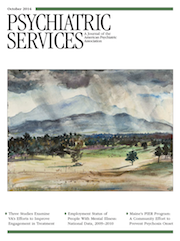As a researcher who develops technology-based tools for the assessment and treatment of mental illness, I am used to encountering skepticism from practitioners, administrators, and services researchers. Some clinicians are apprehensive about losing the “human touch” and weakening the therapeutic alliance, and others worry about being replaced by a machine. Administrators struggle to envision technology-assisted programs, the necessary infrastructure, or billing models that reimburse novel services. Even progressive services researchers often doubt that “cold” technologies can be potent. I understand their apprehension because as a clinical psychologist with an inclination toward technophobia, I had similar concerns.
I came to the field of clinical psychology exactly because I believed in the healing power of human connection. Initially, I conducted research using mobile technology and experience-sampling measures to understand psychopathology. I used these approaches not because I was enamored with the gadgetry, but because I believed that they would provide insights into the lives of people coping with debilitating conditions. They did, and I also witnessed something completely unexpected: instead of being burdened by the research, participants reported feeling better after a period of using the technologies. This was particularly startling, given that we were not intending to help in any way— void of intervention content, the technology was meant to facilitate data collection, without influencing behavior. But participants reported that this process made them introspect about their condition, relationships, and goals. Using a handheld device, they were willing to report problems that they had never endorsed in clinical interviews. As these accidental therapeutic outcomes accumulated, I began to wonder how technology could be used for intentional treatments. I have since conducted multiple projects using increasingly sophisticated technology in a host of settings and with a range of clinical populations. I typically find that with appropriate training and support, even people with severe conditions can use technological tools successfully.
As a community of clinicians, stakeholders, and researchers, we need to understand that those in need of care are more technologically savvy than ever before. Many already seek information about their conditions and treatments online or in an app store. It is essential that we adapt our treatment models so that these individuals can benefit from opportunities afforded by emerging technology. Not doing so because of our own preferences and predilections would be a great disservice.
Enthusiasm for technology-based interventions continues to grow among policy makers and funders. Legislative action has created incentives for organizations that are nimble enough to modernize their models of care. Close collaboration and cross-fertilization between technologists, “traditionalists,” and those of us who are in between will ensure that individuals with psychiatric disabilities benefit from the best technology and human-delivered care in the years ahead.

